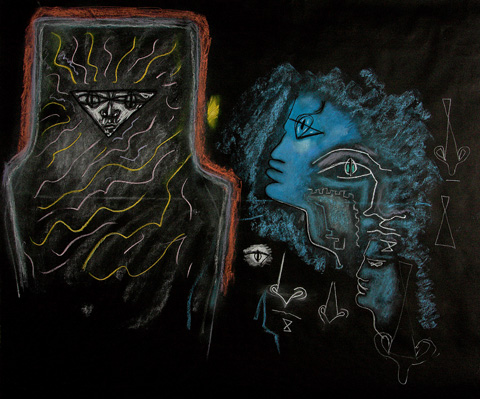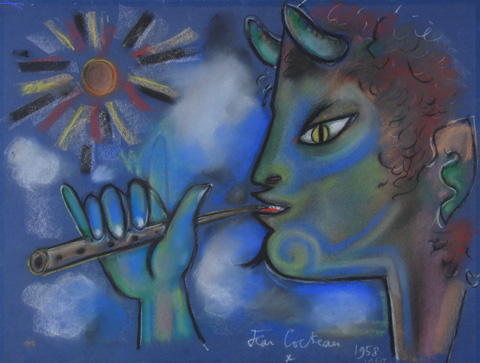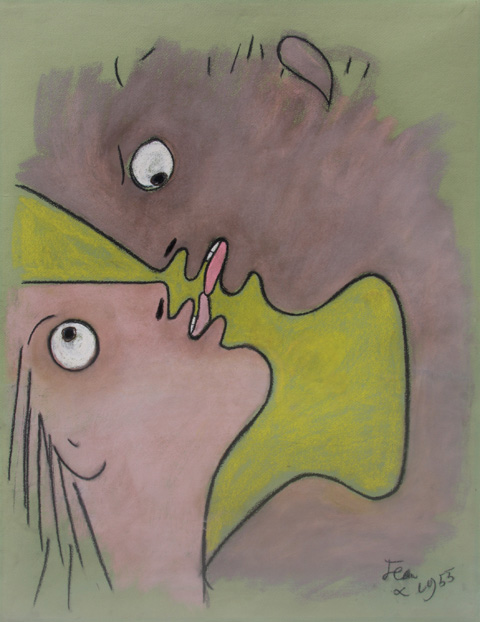Jean Cocteau and pastels
Jean Cocteau began working with soft pastels at the end of the 1940s. Notably, he drew the cartoon for his monumental tapestry Judith and Holofernes using this medium in 1949. This practice was a departure from his usual technique of line drawing, and it would subsequently introduce him to other coloured mediums: "I simply rubbed pastel on coarse paper and I saw that this prevented me from being just a graphic artist. I saw that rather than writing, it brought me closer to the profession of painter..."

Easel painting then occupied his artistic research at the beginning of the following decade. But the chemicals contained in oil paint caused severe skin reactions which forced him to abandon this medium in 1954. While he was seeking other means of exploring colour, his friend and patron Francine Weisweiller offered him a huge box of 680 soft pastels as a Christmas gift: Cocteau then began creating dozens of drawings. This exceptionally prolific period reached its peak in 1955: the artist produced large series of drawings in which he put the very subtle and nuanced aspect of pastels to good use to depict several eminently Mediterranean themes such as Harlequins, mythological creatures, bullfighting scenes or couples of lovers.

Cocteau would continue his research on colour with ceramics, stained glass or tapestry. In 1961, he borrowed a new technique from his friend Picasso: wax crayons. These resemble pastels, but have a very different aspect: unlike the latter, they do not blend, but instead they allow the colour of the paper to be seen, allowing for striking contrasting effects. Cocteau would notably use these wax crayons (Caran d’Ache Neocolor 7000) for the Innamorati series.
